Southwest Michigan field crops update – July 28, 2022
A short reprieve from the hot weather will end over the weekend, but dry conditions are likely to persist into the first half of August, potentially impacting corn pollination in late-planted fields and seed fill in earlier-maturing corn and soybean.
Temperatures this past week were 2-4 degrees above normal on average in the southwest and considerably warmer in eastern Michigan. We picked up 218 growing degree days (GDD, base 40 for alfalfa) or 148 GDD50 (for corn and soybean) this past week. A Canadian air mass will keep temperatures cooler than normal over the next several days, but a return to 90-degree temps is expected next week. The forecasted reference evapotranspiration (FRET) rate will be 1.3-1.4 inches this coming week with daily rates of around two-tenths. The forecast eerily predicts the addition of the same number of GDDs—218 GDD40 or 148 GDD50—in the coming week. There is high confidence in both the 6-10 day and 8-14 day outlooks for above-normal temperatures during the first half of August.
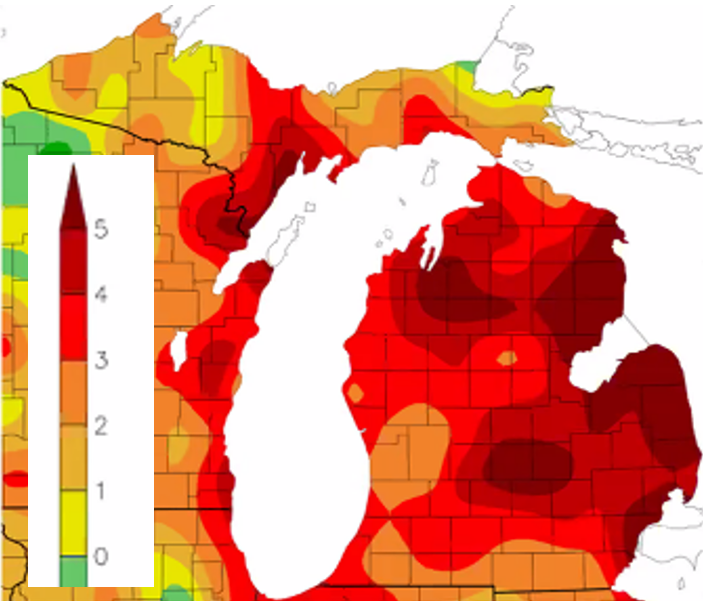
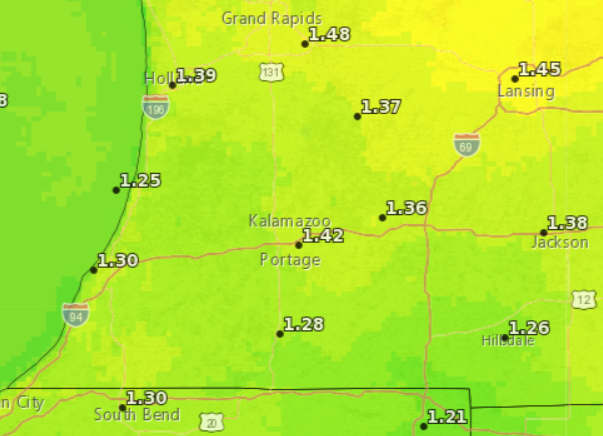
Precipitation was widespread this past week with 0.5-1.0 inch through the middle of the region and over 2.0 inches north and south of that. Much of Kalamazoo and portions of Van Buren and Calhoun counties received slightly less rainfall than normal during the last half of July but the rest of the region has received between 0.5 inch to more than 3 inches more rain than normal. The entire region has been wetter than normal over the entire month of July.
The forecast for the coming week is for swimming pools of rain if you live in southern Kansas through Kentucky and Tennessee as a stationary front is fed by moisture from the Gulf of Mexico. Up here in the Great Lakes region…not so much. A high-pressure system will keep that moisture to our south, and we shouldn’t expect more than a quarter of an inch in the coming week. MSU state climatologist Jeff Andresen says relative humidity will be lower while the high-pressure center remains over Michigan but will turn muggy again next week. The medium-range outlooks call for slightly below-average chances of precipitation during the first half of August.

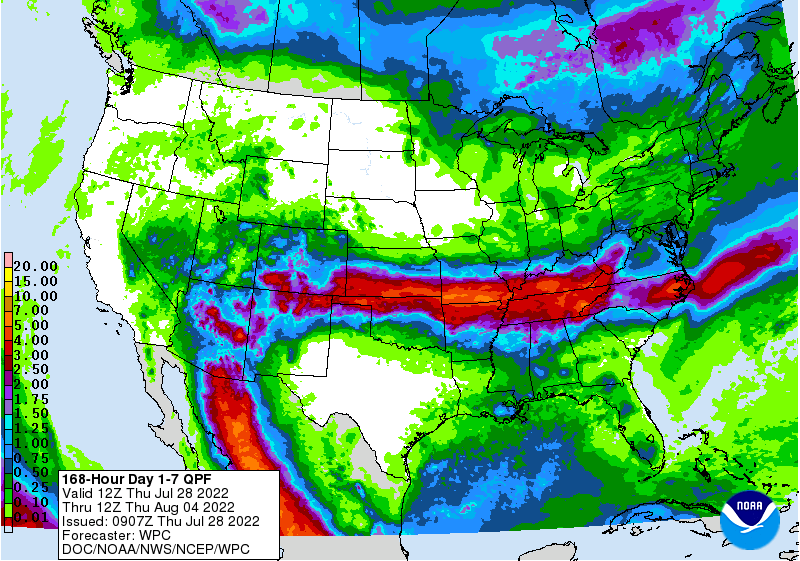
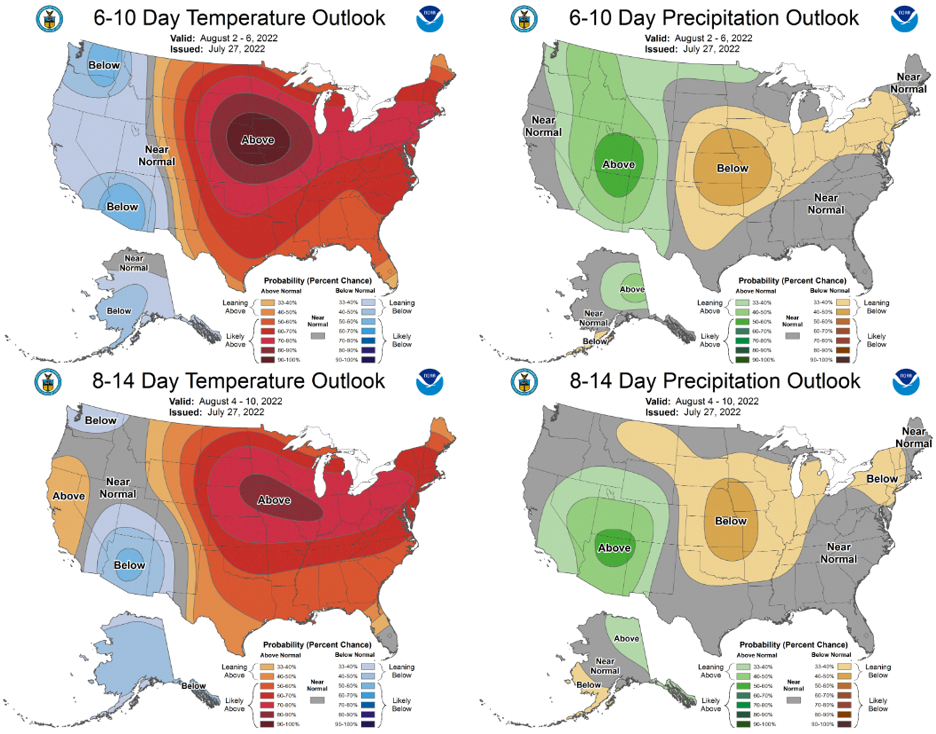
Crops and pests
Corn and soybean continue to progress and look very good throughout the region where timely rainfalls have been received. The earliest corn fields have reached the blister stage (R2) while later-planted fields are still pre-tassel. Soybeans are straddling full flower (R2, open flower at one of the two uppermost nodes) and beginning pod (R3, 3/16 inch or longer appear at one of the four uppermost nodes) in most fields although earlier-maturing fields have reached R3 already. Note: When staging reproductive-stage soybean, begin counting the nodes starting with the first mature trifoliate, i.e., the one just below the newest trifoliate with leaf edges no longer touching. Canopy closure has occurred in most fields which will keep the crop below the canopy humid and moist longer each morning. This will increase the risk of diseases but will also help to ensure that spider mites do not erupt with the hot weather on the way.
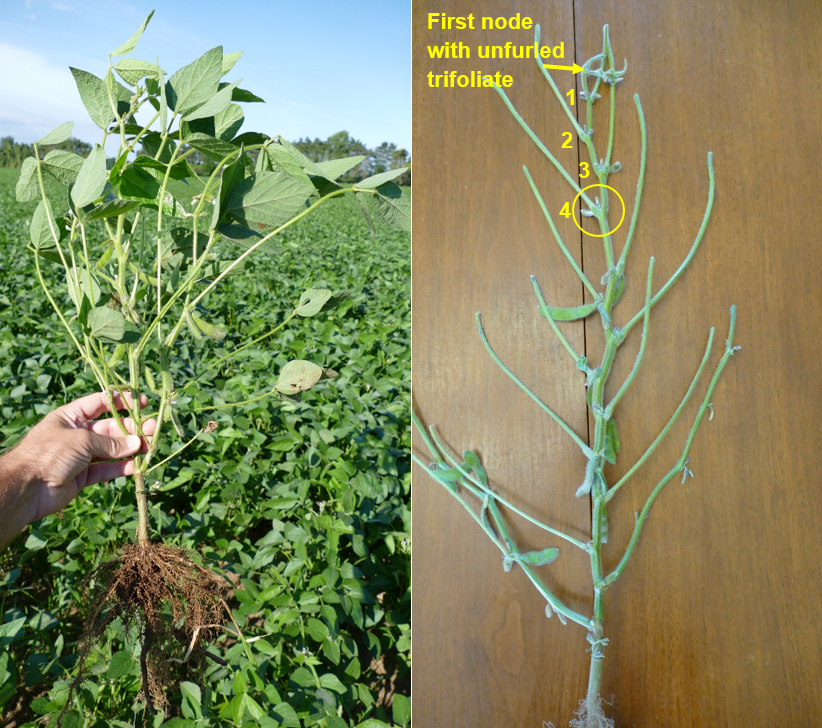
Diseases
Tar spot in corn has only been confirmed in Lenawee County in the southeast so far this year, and risk remains relatively low throughout most of the southwest according to the Tarspotter app. However, as August approaches and heavy morning dews and foggy weather become more common, the risk for the disease to take off will increase. Soybean foliar diseases have begun to show in some fields with more dense canopies. Frogeye leaf spot and possibly early signs of sudden death syndrome (SDS) have been found thus far. Scouting prior to R3 will help to determine which fungicides are needed to control existing diseases and those that historically are a problem in a given field.
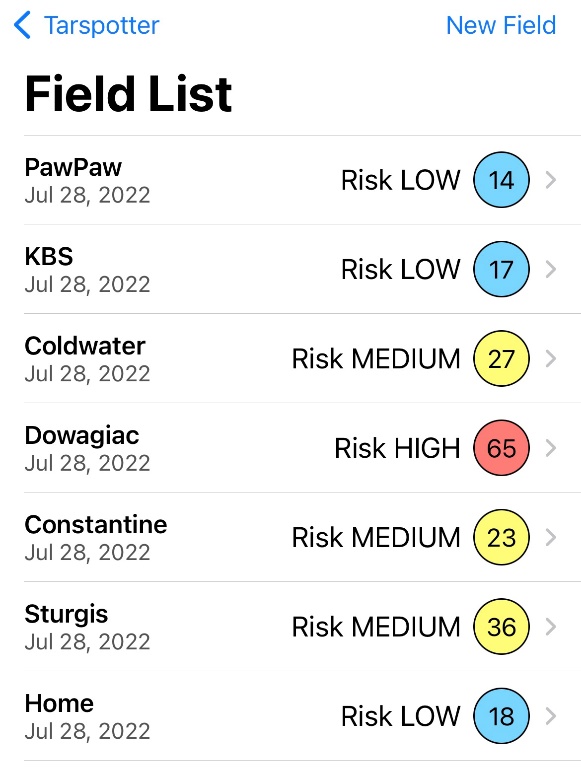
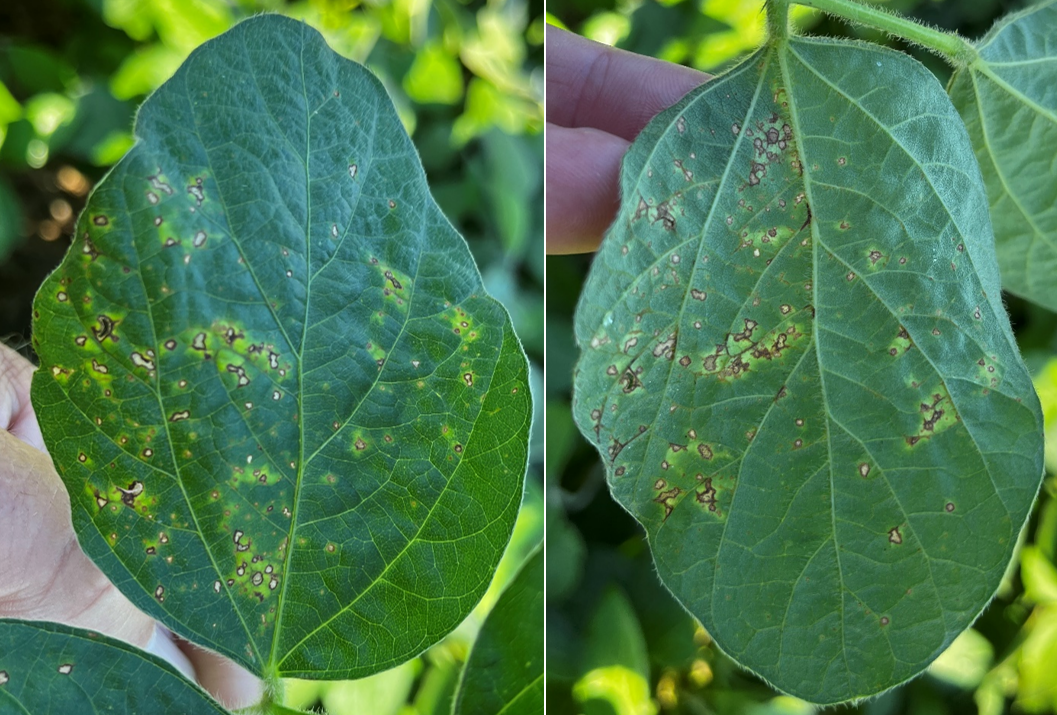
An interesting wheat disease call came in this week with a recently harvested field. The heads in large sections of the field were black (see photos) which is a common symptom of sooty molds that are caused by a number of opportunistic saprophytic fungi. Though the disease does not usually infect kernels or impact yield, or produce toxins, this field experienced severe kernel degradation and reduced yield. If you suspect a disease in your wheat fields, we encourage you to collect samples of the affected plants and send them to the MSU Plant & Pest Diagnostics lab—the Michigan Wheat Program covers the cost of the lab analysis.
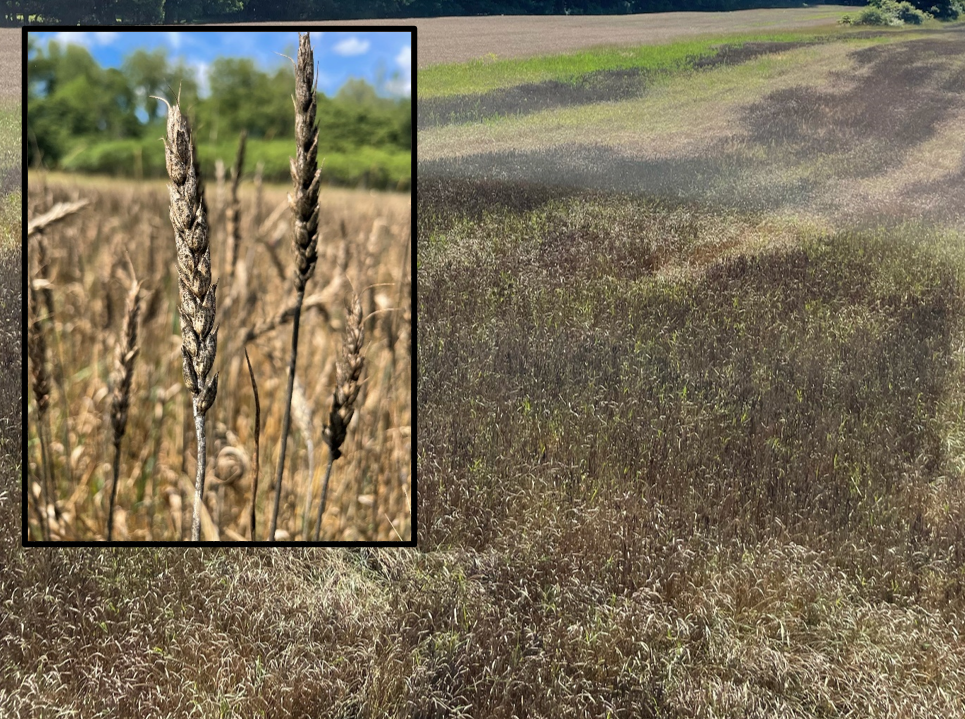
Irrigation
Corn from V16 through beginning dent has a Kc of 1.2 and will require 1.5-1.7 inches this week. Soybeans at R2 (full bloom, Kc=1.1) will use 1.4-1.5 inches, and early fields that have reached R3 (beginning pod, Kc=1.2) will use 1.5-1.7 inches.
Insects
Western bean cutworm (WBC) moth trap counts held steady in some traps and dropped off in others this past week. However, traps in central Michigan are reporting trap counts of 200-300, likely due to the storms that came through that region last weekend that largely missed our region. Trap counts in northern Indiana were hit-or-miss with some increasing over the previous week while others held steady or dropped off. No fall armyworm moths were captured this week, but heading into August is when we would expect to see an increase in activity.
|
Moth captures for WBC in southwest Michigan. |
||||
|
5-Jul |
12-Jul |
19-Jul |
26-Jul |
|
|
WBC1 |
1 |
12 |
7 |
4 |
|
WBC2 |
1 |
25 |
16 |
8 |
|
WBC3 |
0 |
6 |
4 |
7 |
|
WBC4 |
2 |
33 |
32 |
5 |
|
WBC5 |
10 |
109 |
114 |
57 |
|
WBC6 |
2 |
23 |
24 |
28 |
Field Crops Virtual Breakfast
Insect identification and management was the topic of this week’s MSU Extension Field Crops Virtual Breakfast with field crop entomologist Chris DiFonzo. There are no major insect concerns currently, so she took the opportunity to discuss how to identify several species and some of the main scouting and management highlights of each. Identifying insects is important for many reasons, including being able to select an effective insecticide but also knowing which insects are problematic along with their treatment thresholds as well as which insects are beneficial.
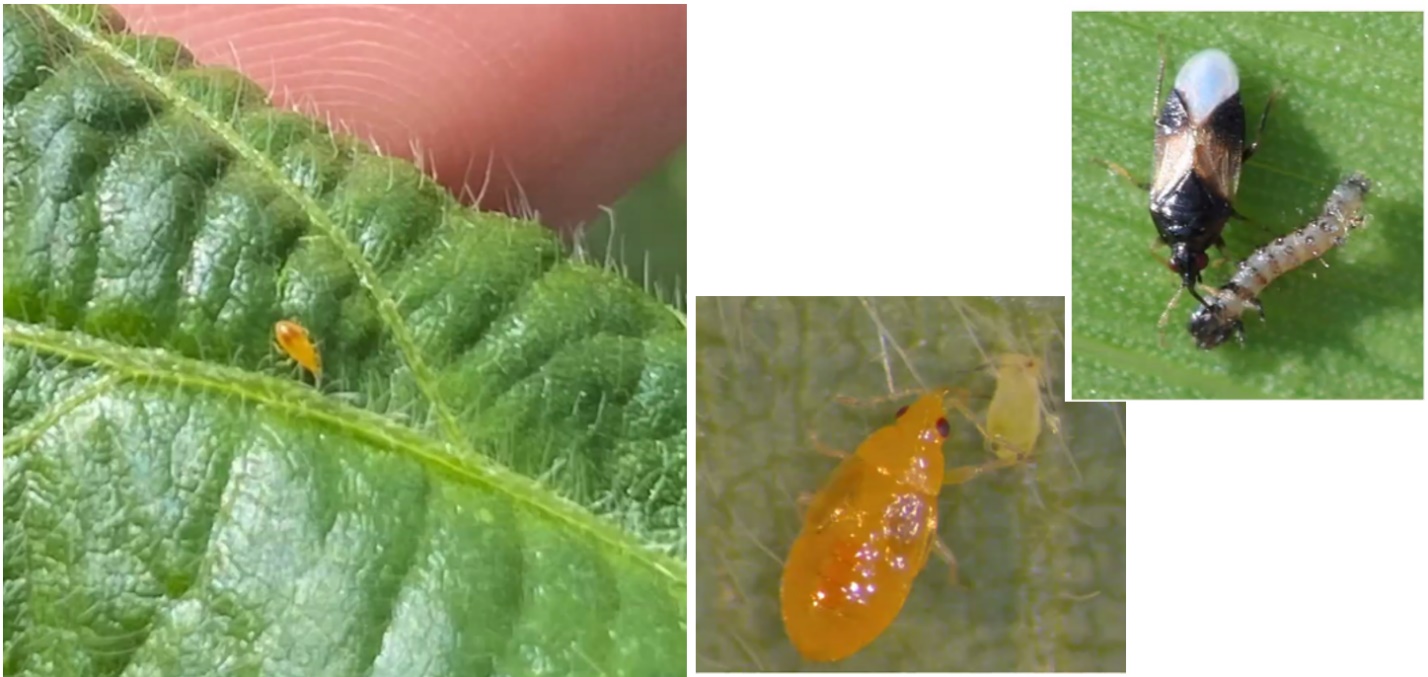
Western bean cutworm scouting is particularly important with fields that are at different growth stages than those in the vicinity as females will target pre-tassel fields to lay eggs. Your later-planted field may end up being a “trap crop” for this species. Moth trap counts are not an indicator of intensity of infestation potential in corn as they are with dry beans, but they help to know when peak flight times occur. Once the female moths lay eggs (generally on the ear leaf or one to two leaves higher), the eggs will change color from white to brown to dark purple/black as the larvae develop. The management threshold is 5% of plants with an egg mass, and this number is cumulative. In other words, if you scout 100 plants in a field this week and find three egg masses, then find another three egg masses out of 100 plants next week, you have reached the threshold for that field. The eggs you saw last week will have hatched in five to seven days, so scouting every seven days will ensure that you are not double-counting. DiFonzo stresses that when tank mixing an insecticide with a fungicide, time the application that makes the most sense for the fungicide as insecticides are typically cheaper and the timing a bit more forgiving.

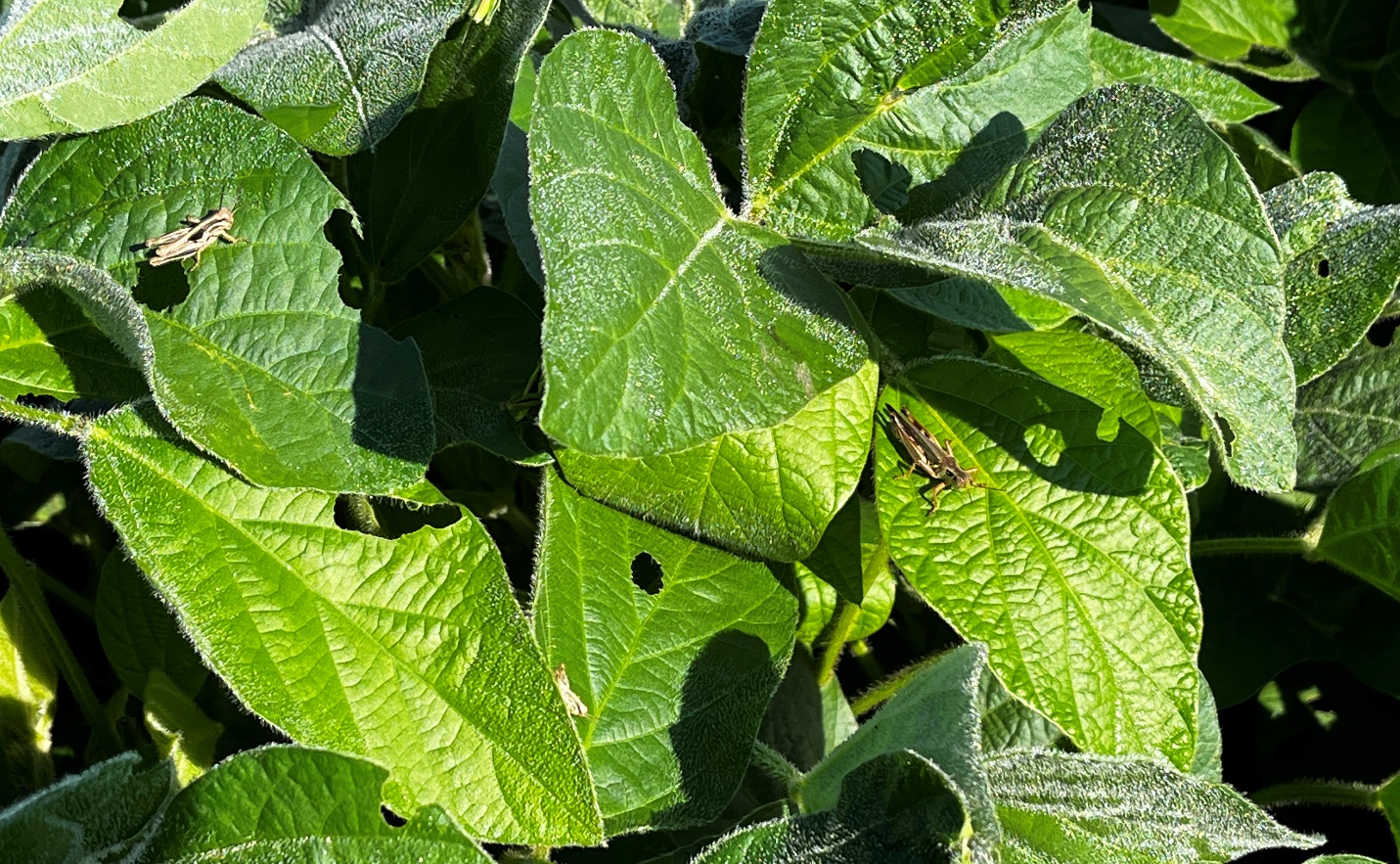
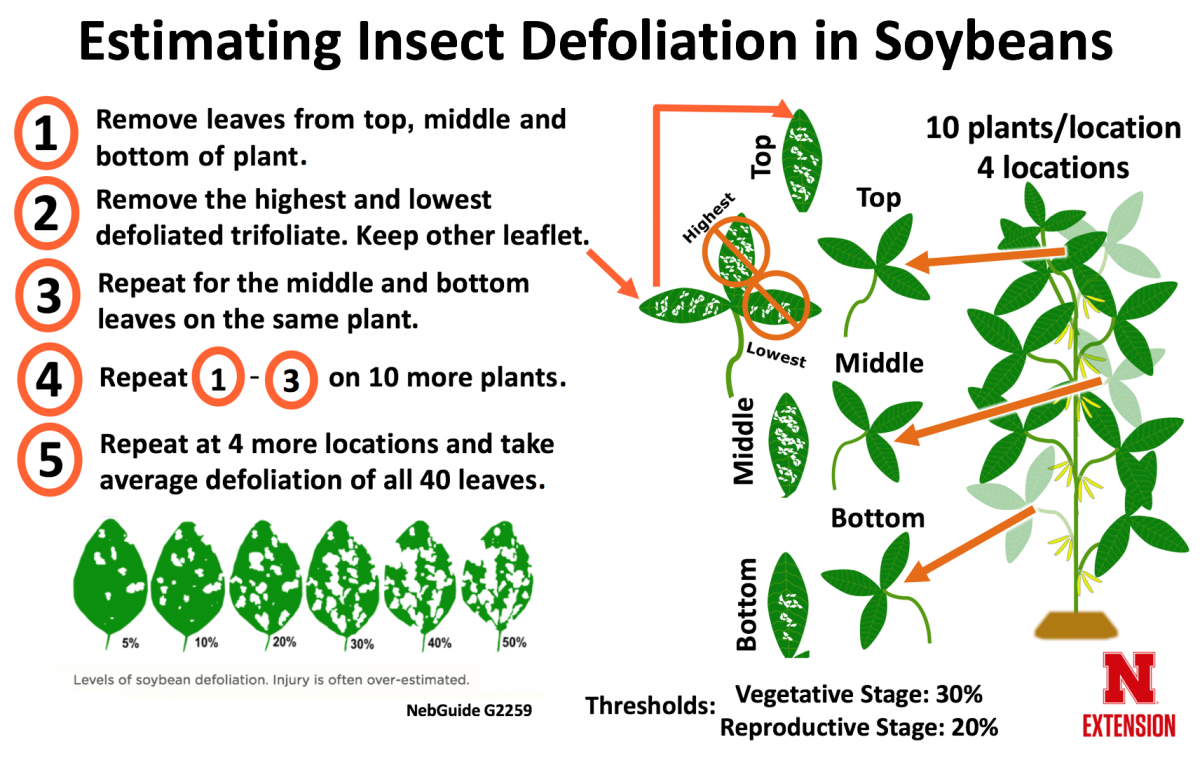
DiFonzo also discussed potato leafhopper in alfalfa, corn rootworm, grasshoppers, various stink bugs, and soybean aphids while fielding questions from the audience. If you were not able to join the session, the recordings will be closed-captioned and available at the Field Crops Virtual Breakfast webpage and the MSU Extension Field Crops Team social media platforms: Facebook, Spotify, YouTube, Apple Podcasts and Twitter.



 Print
Print Email
Email